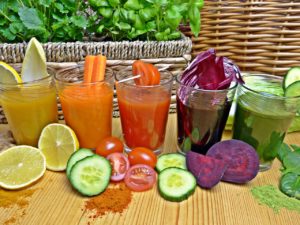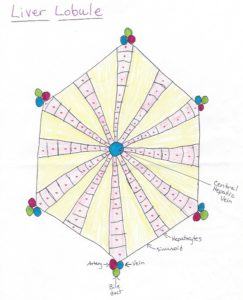
Basics
Most of the liver’s jobs have to do with taking things away from your blood supply or taking them apart.
Your liver produces 3 important components found in your blood. Two of them are involved in helping your blood clot. The third is involved in keeping your blood watery.
Prothrombin
The prefix “pro-“ means “starter” or “before”. Like “prologue” or “prodrugs”. In medicine, it usually means that it’s the starter piece but something has to happen to it (metabolism) for it to become useable.
Not Prozac…brand names of medications are developed by highly paid branding and marketing professionals.
Prothrombin gets activated into Thrombin when your body gets hurt and sends a signal that it needs help to stop the bleeding.
Fibrinogen
The suffix “-gen” means “creating” or “starter”. Fibrinogen gets activated into Fibrin.
So…. you get cut…. *ouch*
“I’m bleeding!”
The clotting cascade starts (way too complicated for this discussion).
When it gets to clotting factor X (ten).
CF X activates Prothrombin into Thrombin
Thrombin activates Fibrinogen into Fibrin
Fibrin – sounds like “fiber”. Fibrin is a protein. Some proteins are globular proteins – they are balled up in globs. Fibrous proteins are nice and stringy like fibers. So, Fibrin is fibrous.
Fibrin lays down a matrix over the wound and then the platelets that are floating around in your blood collect on the Fibrin and plugs the hole.
You want the blood in your body to stay liquid. You need the blood flowing out of your body to harden and stop.
Albumin (also found in the white parts of eggs).
It helps maintain the watery-ness of your blood. They maintain the osmotic pressure of your blood (there’s a big enough difference from the inside of a cell and the outside of the cell to allow the fluid to push through the membrane without needing a portal). If the pressure on both sides is the same, nutrients and chemicals will not transfer.
Albumin also helps the blood stay isotonic (same saltiness). You don’t want the fluid in your blood to be more salty than the fluid in your cells because the water will flow out of the cells into the blood to try and dilute it. But you don’t want the cells to be more salty either because the water will flow the other way and you won’t have enough liquid in your blood.
So, your liver takes the building blocks (amino acids) and puts them together to build these proteins.
Connect with me
Support us on Patreon
*NEW* Join the Pharmacist Answers Podcast Community on Facebook
Subscribe: iTunes, Stitcher, GooglePlay, TuneIn Radio
Like the Facebook page



